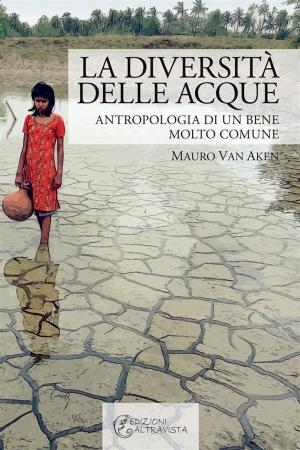Playing golf lengthens your life
Nonfiction, Social & Cultural Studies, Social Science, Anthropology| Author: | Renata Freccero | ISBN: | 9788899688042 |
| Publisher: | Altravista | Publication: | December 13, 2016 |
| Imprint: | Language: | English |
| Author: | Renata Freccero |
| ISBN: | 9788899688042 |
| Publisher: | Altravista |
| Publication: | December 13, 2016 |
| Imprint: | |
| Language: | English |
Practising sport stimulates cerebral activity. In children and adolescents, coordinated movement is the fruit of complex neuromotor programming that is defined as “bodily intelligence.” In the adult, physical activity combats and reduces cerebrovascular diseases, and maintains muscle tone and bone strength. This article comments upon research published in the Scandinavian Journal of Medicine & Science in Sports in 2009, a study reporting that playing golf reduces the death rate for all causes by 40% compared to the life expectancy of a sedentary person. The natural environment free of irritating noise, walking on turf, the predominance of the colour green, the average duration of the game between three and five hours per day, combine to give the player a feeling of general physical wellbeing. Impulses that originate from the field of sight, thanks to the serenity of the environment, travel first to the thalamus from where, via a monosynaptic circuit, they reach the hypothalamus and create positive homeostasis. External conditions, through auto-regulatory mechanisms, induce in the golfer an inner stability in terms of chemical and physical properties.
The sensation experienced by the player is of such pleasure as to lead to this sport’s being defined as a drug. The human brain thus perceives the golfing environment as healthy and desirable, but there is one aspect that is being missed.
In Liguria, in August 2015, a growth in the population of wild boars was recorded. Much harm was done to agriculture, and considerable damage also occurred on golf courses, but in what ways? The devastation was concentrated along the fairways, while the greens and tees were left untouched. In Piedmont the situation was less invasive, but for the rest identical. Environmental pollution, periods of drought alternating with periods of heavy rain, mean that specific action is required on grassy areas, above all on the greens and tees. Frequently this means treatment with pesticides and weed-killers that are harmful to man, but they send no signal of danger to man’s brain. Presumably, however, the wild boar can somehow detect their presence. Although practicing golf leads to general psychophysical wellbeing, precise indications should be followed concerning the risks of this practice.
Practising sport stimulates cerebral activity. In children and adolescents, coordinated movement is the fruit of complex neuromotor programming that is defined as “bodily intelligence.” In the adult, physical activity combats and reduces cerebrovascular diseases, and maintains muscle tone and bone strength. This article comments upon research published in the Scandinavian Journal of Medicine & Science in Sports in 2009, a study reporting that playing golf reduces the death rate for all causes by 40% compared to the life expectancy of a sedentary person. The natural environment free of irritating noise, walking on turf, the predominance of the colour green, the average duration of the game between three and five hours per day, combine to give the player a feeling of general physical wellbeing. Impulses that originate from the field of sight, thanks to the serenity of the environment, travel first to the thalamus from where, via a monosynaptic circuit, they reach the hypothalamus and create positive homeostasis. External conditions, through auto-regulatory mechanisms, induce in the golfer an inner stability in terms of chemical and physical properties.
The sensation experienced by the player is of such pleasure as to lead to this sport’s being defined as a drug. The human brain thus perceives the golfing environment as healthy and desirable, but there is one aspect that is being missed.
In Liguria, in August 2015, a growth in the population of wild boars was recorded. Much harm was done to agriculture, and considerable damage also occurred on golf courses, but in what ways? The devastation was concentrated along the fairways, while the greens and tees were left untouched. In Piedmont the situation was less invasive, but for the rest identical. Environmental pollution, periods of drought alternating with periods of heavy rain, mean that specific action is required on grassy areas, above all on the greens and tees. Frequently this means treatment with pesticides and weed-killers that are harmful to man, but they send no signal of danger to man’s brain. Presumably, however, the wild boar can somehow detect their presence. Although practicing golf leads to general psychophysical wellbeing, precise indications should be followed concerning the risks of this practice.















